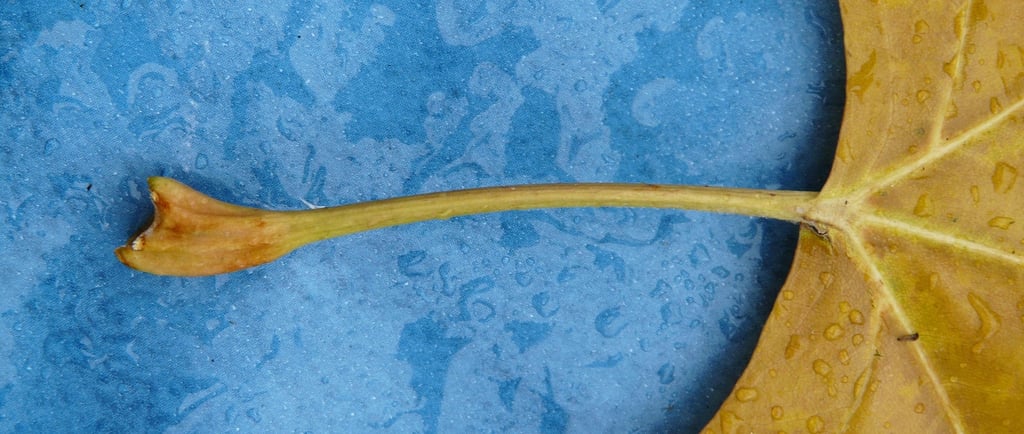💪🌱 The Leaf’s Hidden Helper: The Mighty Petiole! 🌿✨
A follow-up story that connects The Plant and The Leaf chapters in the Biology Album. 🌿✨ After discovering how leaves act as the plant’s food factory, we now turn to an unsung hero—the petiole! 🍃 This small but mighty connector holds up the leaf, positioning it just right to catch sunlight ☀️ while transporting water and nutrients between the stem and leaf. 🚰 Without it, the leaf couldn’t do its job, and the plant would struggle to grow! Some petioles are even so strong and full of nutrients that we eat them (🥬 hello, celery and rhubarb!). Others help leaves adjust for maximum sun exposure or even curl up when touched! 🌬️💃 This story branches into The Leaf, where we explore different leaf shapes, structures, and their fascinating adaptations, and back to The Plant, where we see how each part plays a role in the plant’s survival. It sparks curiosity: Do all leaves have petioles? How do plants with tiny or no petioles manage to survive? Let’s explore! 🔎🌿💭
BIOLOGY STORIES
3/11/20252 min read


Following the Leaf's Food Factory
Have you ever wondered how leaves stay attached to the plant? 🤔 Do they have glue? Velcro? Tiny plant hands gripping the stem? 🖐️😂 Nope! The secret is the 👏🏻pe-ti-ole 👏🏻—the little stem-like part that connects a leaf to the main plant. And the name has a very cool meaning—“little foot”! 🦶 And that makes sense because the petiole is like the leaf’s foot—it holds it up, connects it to the stem, and helps deliver water and food! 💧🍃 It may look small, but don’t underestimate it—it’s like a plant’s flexible arm, holding up leaves so they can catch the sunlight and make food! ☀️🌿
But wait! Before we investigate the petiole’s secret powers, do you remember—what does a plant need to grow? 🤔🌱 ☀️ Sunlight ( warmth ) 💧 Water 🌬️ Air 🌍 Soil
Now it’s spring in the Northern Hemisphere, and you may start noticing all plant buds suddenly start growing and leaves beginning to appear on every plant, short and tall. It’s almost as if they can feel the warmth and the longer days!
When we did our experiment with seeds 🌱, we discovered that without water, warmth, and light, plants struggle to grow. The ones missing light or warmth stayed stunted—they weren’t able to make enough food! 🍂
The plant needs all these things to grow strong and healthy. But just like a well-organized team, each part of the plant has a special job to do! The stem is like the plant’s superhighway 🏗️—it carries water up from the roots and sends food made by the leaves down to nourish the whole plant. And the petiole is bridge between the leaf and the stem, making sure everything flows just right. 🚰 The petiole also keeps the leaf in the perfect position to soak up sunlight ☀️ and even lets it adjust slightly when the wind blows! 🌬️ 💃🍃
But petioles aren’t just leaf lifters… some are also delicious!🤤 Wait—what?! That’s right! Some petioles are so tasty that we eat them! 🍴😋 Let’s meet some of the famous petioles hiding on our plates.
Here I have 🥬 Celery – The champion of crunch! Every time you chomp on a celery stick, you’re actually eating a petiole! Try bending it—see those little strings? That’s proof of the elevators with the nutrients that are delivered to the leaves through the petiole. 🌱
I brought another delicious petiole 🍀 Rhubarb – The trickster of the plant world! But why trickster?Its petioles are super sour but perfect for pies! 🥧 But be careful—the leaves are poisonous! ‼️😲 That’s right, the plant wants you to eat its petiole, but not its leaves! What a clever trick! 😆
You might mistake this for Rhubarb, but it’s not! 🍠This is Swiss chard – The rainbow petiole! 🌈 Have you seen Swiss chard’s bright red, yellow, or pink stems? Those are petioles! And they’re not just pretty—they’re packed with vitamins 💪😋 and can be eaten raw in salads, sautéed like spinach, or even blended into smoothies! 🥗🍵 Some people even use them as natural dyes for food or fabric! 🎨
Now let's go outside observe and explore! Who’s ready to go on a petiole hunt?! 🌱🔎✨ And make a futher research about this delicious petioles I brought here, how we can prepare them and share them as a community snack.
🤔💭 I wonder… do all plants have petioles, or are there leaves without them? 🌾 But here’s another tasty question—since we eat petioles, do we eat buds too? 🤔🌱
With Montessori joy,
Vanina 😊

